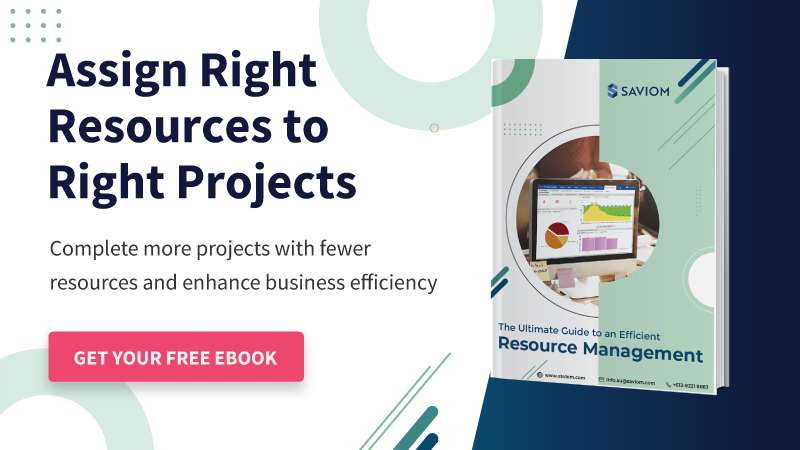In today’s era of unlimited access to employee talent and the growing demand of freelancers and gig workers, is employee retention still necessary?
The answer is a resounding yes! It’s essential.
According to an Employee Benefits News survey, losing an employee can cost the company around 33 percent of that employee’s salary.
The negative impact on the company’s bottom line is only one side of the problem.
Furthermore, many experts speculate that businesses will have an imminent wave of employee turnover in the coming months as companies will soon reopen offices.
That means firms must discover the top reasons why their employees are unsatisfied and strive to fix them rapidly before top talent walks out the door.
But the question is, how can we keep employees at their jobs, happily working?
Here is the detailed blog post that covers everything you need to know about employee retention. From why talent retention matters, the top reasons employees leave jobs, to how you can create effective employee retention strategies
What is employee retention, and why is it important?
Employee retention encapsulates certain practices that organizations carry out by investing in the employee experience to keep talent engaged while limiting turnover.
The success of every firm depends on reducing employee turnover. For one, it requires time and money to embark and train new people. Second, decreased productivity and losing a competitive edge are the main losses caused by employees leaving a company.
Therefore, developing employee retention strategies that can help you build a long-lasting relationship with your employees is essential. In addition, it will boost job satisfaction levels resulting in higher employee productivity, company loyalty, and increased profits.
Read More: Ten Effective Strategies to Reduce Employee Turnover
Information needed to create an employee retention strategy
Employees leave their jobs for various reasons. While some might attribute to personal reasons such as pursuing higher education, career change, retirement, etc., most of the time, the internal work environment can also push people to seek new employment opportunities. These factors can also be impacted by the company culture, unequal compensation, work stress and burnout, lack of growth opportunities, and more.
Therefore, companies must do in-depth qualitative and quantitative research to understand the underlying causes before creating a retention strategy. Here are the details;
Measure employee turnover
Organizations should monitor turnover rate as it is one of the many tangible ways to understand the root cause. There are a few different types of turnover, such as voluntary, involuntary, internal transfers, and new hire turnover, to name a few. However, firms must primarily focus on voluntary turnover or the number of people who willingly left their organization.
You can measure employee turnover by dividing the total number of employees leaving in a month by your average number of employees. The formula is as follows:
Employee Turnover Rate = [(No. of voluntary departures/average of employees) X 100]
Conduct employee retention surveys
Sometimes spikes in employee departures can indicate more significant issues at your organization. Therefore, conducting employee retention surveys and focus groups surveys within the existing workforce can help your HR team understand what underlying organizational problems could be prompting top talent to leave.
Constant employee engagement surveys on all areas of employee experience, such as salary, benefits, management, and work-life balance allow you to collect anonymous feedback. In addition, it can help you identify specific areas of your organization that have scope for improvement.
Employee feedback from exit interviews
Exit interviews can help firms to collect more in-depth qualitative data from their employees. Let’s take a scenario to understand this; Suppose a financial services company hired a manager to oversee an insurance department of 20 employees. Six months later, only ten remained, six had resigned, and four had transferred.
To understand what led to the departure, the upper management looked at the exit interviews of the six resigned employees. They all conveyed that the manager lacked critical leadership and managerial skills, and employees were forced to work for extra hours with no appreciation. Thus, the feedback from exit interviews made the organization understand the root cause of their resignation and help take necessary corrective actions.
Conduct 360-degree feedback
The 360-degree performance evaluation of the employees lets companies leverage the information and identify areas of improvement. For example, they can find out how an employee interacts and works with peers, subordinates, managers, etc. It also provides information on employee’s performance, contributions, behavior, and more. A successful 360 feedback process, includes various roles, such as:
- An evaluation administrator/ an HR employee
- A manager who directly supervises the employee
- Four or five coworkers who work closely with the employee
- Junior employees working under the employee
Once you’ve collected sufficient information from employees, attempt to find trends and patterns in their feedback. For instance, if a certain manager’s behavior receives negative feedback, the upper management can take remedial measures ahead of time. In addition, this data will determine how you can develop a retention strategy down the lane.
Read More: What is Workforce Planning, and How to Master it for Business Efficiency?
Collect salary-related data from the peer organization
If many employees expressed dissatisfaction with pay and compensation during exit interviews or through formal surveys, then it’s time to evaluate your compensation strategy. You can conduct a salary and benefits study to determine if you offer the same as other businesses in your industry and region.
For instance, the average annual pay of a react native developer may be below the median for the skillset in your firm. Thus, the HR team should look at industry benchmark data and adjust salary and benefits to remain competitive and retain employees.
Joining/retention bonus
Today skillful employees are offered attractive job benefits from other companies. Therefore, companies can research which skill set is a hot job market role and collect the data. That way, when employees with that niche skill join the company can be given a joining bonus to build a solid relationship and longer-term loyalty.
Besides, firms can also collect information from the IDP of employees who have recently completed the training program or are upskilled to fulfill future business operations. They can also be offered retention bonuses to ensure that they do not take their talents elsewhere. In a nutshell, joining and retention bonuses can prove beneficial to maintain a liquid labor market and reduce corporate poaching practices significantly.
Employee interest captured from IDP
Employers can conduct a follow-up session with employees to get feedback about the ongoing training or upskilling programs. It will help companies understand how valuable training and development experiences are to the employees and whether it caters to their professional plans.
Companies can use this information to identify the gap and create fool-proof Individual Development Plans (IDP) that ignite workforce potential.
Read More: 9 Effective Tips on Enhancing Employee Performance at Work
Following the collection of all the data and information where a business needs improvement, it’s time for upper management to develop an efficient retention solution. Let’s look into the details below;
9 employee retention strategies and best practices
If you sense your company is at risk of losing top talent, you need to quickly shore your staff retention policies. Here are nine strategies that can help boost employees’ job satisfaction and enhance your capacity to maintain valued talent:
Align recruitment process with organizational objectives
The first step to employee retention is to align the recruitment process with business objectives. If the employee is not the right job fit or cultural fit, i.e., their skills and traits do not match the long-term business needs, it will lower productivity, engagement, etc., leading to an employee turnover. Therefore, companies should streamline their interview and hiring process to ensure that new hires align with the value blueprint of the organization while possessing the critical skillset.
In addition, new hire needs time to learn and adjust to the workplace culture. Therefore, pairing them with a mentor is a significant addition to your extended onboarding process, especially in a remote work environment.
Foster a supportive and inclusive workplace
A diversity and inclusion strategy can help businesses retain top personnel, and drive optimal results. It is also essential to enhance employee satisfaction, teamwork, and productivity. In addition, a diverse and inclusive work culture enables you to recruit individuals irrespective of their community, religion, country, and sexuality.
Organizations fostering diversity and inclusion acknowledge their employee’s interests, provide them fair opportunities. They create a positive work atmosphere where every voice is welcome, heard, and respected. Implementing more inclusive policies, like childcare stipends, offering parental leave, company holidays, can also make every individual feel supported by the company.
Read More: 7 Future Workplace Trends to Expect in the Post-Covid Era
Provide competitive salary and benefits
A study conducted by Glassdoor revealed that the main reason for the 45% of employees who quit their jobs was salary.
Companies need to pay their employees competitive compensation, which means employers need to evaluate and adjust salaries regularly. Even if a business can’t increase pay right now, they should consider providing other forms of compensation, such as bonuses, perks, etc.
One can also provide health care benefits and retirement plans, which can help raise employees’ job satisfaction. In addition, organizations can add lucrative perks like wellness offerings, monthly gym memberships, reimbursement for fitness classes, etc.
Promote a healthy work-life balance
A recent study found that 80% of employees are more likely to be loyal to their current employer if it offers flexible work arrangements.
Today, many companies follow the virtues of work-life balance because continually overworking employees can lead to employee burnout. Thus, companies can set efficient resource schedules or allow their employees to set flexible work hours and get their work done. You can also encourage the staff to take regular time off or use their vacation/leaves yearly.
Read More: How Resource Management Facilitates a Healthy Work-Life Balance
Implement an effective employee engagement program
According to a Gallup poll, 73% of actively disengaged employees are looking for a different job.
Therefore, creating ways to foster collaboration, including stress management programs, occasional team-building activities, is needed. These activities also help combat feelings of loneliness or isolation in both co-located offices and among remote workers. In addition to face-to-face team building options, there are many virtual team activities like monthly virtual lunch, happy hours, coffee meetings, and virtual games sessions. These practices reinforce workforce morale, strengthen team bonding, and maximize productivity.
Plan employee recognition and reward system
Unfortunately, many employees leave companies because they feel undervalued or unappreciated in their roles. Therefore, employers must ensure that they acknowledge and recognize employees for a job well done. In return, it can help improve engagement and ultimately contribute to employee retention.
Employee recognition can take many forms, like a wall of fame, social media recognition, an internal email with kudos, or a bonus for achieving monthly goals. Even seemingly small gestures like appreciating an employee’s hard work in a meeting can help the team feel acknowledged and appreciated.
Read More: Employee Recognition Programs: Types, Benefits and Best Practices
Evaluate and encourage feedbacks
Listening to the employees goes a long way towards retaining them. Therefore, companies must organize feedback programs that cover one-on-one, team, or departmental sessions where employees can share their views.
Instead of just formal annual reviews, companies can also check in regularly with the employees to understand their needs and experience in the workplace. Then companies can use this feedback to enhance work practices, processes and bridge the gaps. In addition, it will make every employee feel heard and valued, thereby improving retention.
Create a management development program (MDP)
Employees should be nurtured and given enough opportunities to become productive leaders and managers in the organization. A management development program (MDP) can serve this purpose. It is usually different from a technical training program as it helps to groom entry-level managers and people in middle management.
With an effective management development program in place, a business can enhance its human capital, create a culture of innovation, improve succession planning, and ultimately increase employee retention.
Read More: Importance of skill development in making your workforce future-ready
Conduct learning and development programs
According to LinkedIn’s 2021 Workforce Learning Report, when given internal training and learning opportunities, employees at companies stay almost two times longer.
Suppose an individual doesn’t think they can learn and grow at your organization. In that case, odds are these top performers will take their talents elsewhere. Therefore, a company should always strive to follow the three ‘E’s of development;
- Education
- Experience
- Exposure
The sharing of knowledge may be done through professional education or reimbursement programs that enable staff to purchase books, attend conferences, and develop new technical or soft skills. They should also find some internal projects and opportunities that will give exposure to new areas. Further shadowing opportunities, cross-departmental assignments, and more can be provided to junior-level employees that can help them hone new skills and gain experience and exposure.
Read More: 10 Essential Soft Skills That Will Become Prominent in 2030
Over to you
Employee retention programs and strategies come in all forms and therefore, cannot follow a ‘One-size fits all’ policy for all companies. Every organization has its unique areas that need improvement; therefore, it’s essential to keep the aforementioned vital factors in mind to create an effective employee retention strategy.
Of course, there will always be people joining and leaving your organization, but by investing in the right areas, you can ensure your employees have an exceptional experience at your company, from the first day to their last.
The Glossary
Read More: Glossary of Resource Workforce Planning, Scheduling and Management
The SAVIOM Solution
SAVIOM is the market leader in offering the most powerful and configurable solutions for managing enterprise resources efficiently and effectively. Having more than 20 years of experience, this Australian-based MNC has a global presence in over 50 countries. It is also popular with more than 100 customers and helps them achieve their business goals. SAVIOM also has products for project portfolio management, professional service automation, and workforce planning software which can be easily customized as per business requirements.












